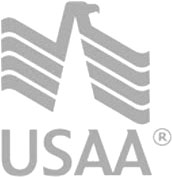Is it finally time to gut the kitchen and replace grandma’s rusted avocado appliances? Do you love the location of the house at 123 Elm Street but are put off by the lack of doors, windows, siding, and a roof? Maybe you’ve decided the triplets need their own bedrooms instead of sleeping in yours? (After all, they are 20 years old now! … kidding …)
The mortgage banking industry can help! There are many options available you that allow you to either take advantage of the equity in your home to make your home better OR to buy a dilapidated house and create a castle. Let’s examine a few of the more popular options.
Home Equity Loans
Suppose you are one of the fortune Americans who own a home and owe less on it than it would sell for today. Congratulations! That means you have “equity” in your home. If your home would sell today for $300,000 and you owe $150,000, you have $150,000 of equity on your home. Sell it NOW!!! Once again, I am kidding. But do seriously consider taking advantage of still-low interest rates and using some of that equity. For example, if you’re thinking about a bit of home remodeling or need funds to help pay for a college education, you might consider using your home's equity. Home equity loans are often also called “second mortgages”.
There are 2 basic kinds of home equity financing typically available. You can choose a loan or a line of credit. With a home equity loan, the lender advances you the total loan amount upfront, while a home equity credit line provides a source of funds that you can draw on as needed.
Once you decide to obtain a home equity loan, follow the advice of Smokey Robinson and the Miracles or the Captain & Tennille or whoever it was and know “You Better Shop Around”, just like momma told them. The required paperwork and cost of either of these home equity choices as well as the associated interest rates may vary.
A home equity line of credit is known as a HELOC (pronounced HE – LOCK). This is much like a credit card in that you use the money as you need it (typically by writing a check or using a credit card associated with the account that does not exceed the credit limit). You pay based on the amount you use/spend, again, similar to a credit card. Obtaining a HELOC means you are using your home as collateral and places a lien against the property. You can often (depending on your FICO score and some other factors) borrow up to 85 percent of the appraised value of your home less the amount you owe on your first mortgage. Be sure to ask (your lender, not your momma, unless she is also a home loan expert) about withdrawal requirements (frequency, minimum and maximum amounts, etc.) and exactly how to obtain the funds (check, credit card, both, etc.).
Like home equity loans, HELOCs require you to use your home as collateral for the loan. This may put your home at risk if your payment is late or you can't make your payment at all. Loans with a large balloon payment — a lump sum usually due at the end of a loan — may lead you to borrow more money to pay off this debt, or they may put your home in jeopardy if you can’t qualify for refinancing. And, if you sell your home, most plans require you to pay off your credit line at the same time. Also, know if the outstanding balance must be paid in full or over time and whether your payments will go towards principal and interest or just interest. And get the late fee schedule also.
Ask about the interest rate and whether it is variable or fixed. Variable rates might have lower monthly payments in the beginning, but then the payments may change — and may go up. Fixed interest rates, if available, might be higher than variable rates, but the monthly payments are the same over the life of the credit line. Variable rates will also have associated caps, index, and margins that need to be investigated before signing on the (usually) solid line. As always, the choice depends on many factors but especially your financial situation, knowledge, and discipline.
With nearly every home loan financing choice, there are also fees involved. Expect to pay an application fee, title search, appraisal, attorneys’ fees, and points (a percentage of the amount you borrow). There may also be additional fees throughout the life of the loan, such as a membership fee, transaction fee, etc. Next, determine if there is a balloon payment at the end of the HELOC term and if the loan can be renewed or extended.
A “closed end” home equity loan is a fixed operates very much like a mortgage. It is most often a fixed rate loan and is fully amortized. Once you obtain home equity loan funds, you cannot borrow further from the loan.
2013 K Loans
An FHA 203K renovation loan may allow homeowners the ability to finance major upgrades to their homes via funding for repair and renovation – all in one loan. The government-insured “K” loan provides financing for repairing or remodeling a primary residence -- purchase or refinance. The cost of the money to finance (or refinance) a home and complete the repairs gets folded together into a single home loan. Eligible properties must be at least one year old and fall within local Federal Housing Authority price guidelines and must be owner occupied as the primary residence. The project must cost at least $5,000. There is a cap set at an additional 50% of the appraised value -- after completed repairs, including contingencies.
The FHA 203k may be a great choice for homeowners and homebuyers with smaller repair budgets. Suppose you buy a home that needs a brand new kitchen and bathroom. A 203k loan would then give you the money to buy (or refinance) the house plus give you the money to do the necessary upgrades to the kitchen and bathroom. Further, 203k loan usually include an up to 20 percent “contingency reserve” so that you will have the funds to complete the remodel in the event it ends up costing more than the estimates suggested and/or 2) a provision that gives you up to about six months of mortgage payments so you can live elsewhere while you're remodeling, but still pay the mortgage payments on the new home.
There are essentially two main types of FHA 203k loans. The first is the standard 203k, which is given for properties that need structural repairs such as a new roof or a room addition; the second is the streamlined 203k, which is given for non-structural repairs such as painting and new appliances. Among the other repairs that an FHA 203k will cover: decks, patios, bathroom and kitchen remodels, flooring, plumbing, new siding, additions to the home such as a second story, and heating and air conditioning systems. The program will not cover so-called “luxury” improvements such as adding a tennis court or pool to the property.
“The specific types of improvements that borrowers may make using Section 203(k) financing include:
-structural alterations and reconstruction
-modernization and improvements to the home's function
-elimination of health and safety hazards
-changes that improve appearance and eliminate obsolescence
-reconditioning or replacing plumbing; installing a well and/or septic system
-adding or replacing roofing, gutters, and downspouts
-adding or replacing floors and/or floor treatments
-major landscape work and site improvements
-enhancing accessibility for a disabled person
-making energy conservation improvements
HUD requires that properties financed under this program meet certain basic energy efficiency and structural standards.”
The maximum amount of money you can get under an FHA 203k depends on the type of loan you choose (regular vs. streamlined). With a regular FHA 203k, the maximum amount you can get is the lesser of these two amounts: 1) the as-is value of the property plus repair costs, or 2) 110 percent of the estimated value of the property, after repairs. With a streamlined loan, you can get a loan for the purchase price of the home plus up to $35,000.
To determine the as-is value of the property or the estimated value of the property post-repair, you may need to have an appraisal done. You will be required to put down 3.5 percent, but the money can come from a family member, employer or charitable organization. Qualifying homes include: a one- to four-family home that has been completed for a least a year; a home that has been torn down, provided that some of the existing foundation is still in place; a home that you want to move to a new location. The home cannot be a co-op, but some condos are eligible. Your property will also have to qualify under the usual FHA requirements. For example, its value cannot exceed a certain maximum amount, which depends on where you live.
There is basically only one drawback of a K loan, assuming you meet all eligibility criteria. You need to keep detailed paperwork, you may need to hire an independent consultant to prepare the required documentation (for example, you have to provide a detailed proposal of the work you want to do and cost estimates for each item).FHA 203k Streamline loans, which are smaller and for mainly cosmetic repairs, typically involve less paperwork.
OTHERS:
Similar to the 203K loan is Fannie Mae’s HomeStyle® Renovation Mortgage. Purchase or limited cash-out refinance. The HomeStyle® loan is for one to four unit primary homes or 1 unit second or investment homes and includes condos, coops, and PUDs (Planned Unit Developments). Any sort of renovation or repair is eligible IF that is permanently attached to the house and IF that adds value to the property. The allowable amount is the lower of the home purchase price plus the cost of the renovation OR the value after completion. Since this is a conventional loan, the mortgage value may be higher but the FICO and downpayment requirements may be also.
Other notable difference between 203K® and HomeStyle® include:
HomeStyle® is suitable for all renovation work listed above. But it can also be used for extensive landscaping and luxury items including pools. Luxury items such as outdoor kitchens, spas, and pools may either be installed or repaired under this program. 203K does not allow for these options. HomeStyle® may also be used for condo projects and homes that are not yet finished. Another big difference is that HomeStyle® includes options for renovations to purchase or refinance a second home or investment property. Check with your enlightened mortgage lender.
Have you heard about the USDA loan program, farmer Joe? Its long name is the USDA Rural Development Guaranteed Housing Loan Program. This is a mortgage loan offered to rural property owners by the United States Department of Agriculture. As you might have guessed, this loan is specifically for rural markets. It also is attached to specific borrower income limits, property eligibility, etc. Check with the Rural Development site and then of course, your enlightened mortgage lender.
If your property is secured by a Jumbo mortgage, there are lenders that offer “Jumbo Rehab” loans for cosmetic improvements. Also, if you are buying or building a home that has one small aspect that will not be complete before closing, ask your lender up front about the possibility of holding funds on “escrow” for post-closing completion.
However, if you plan to replace the rusted avocado green appliances with rusted burnt orange appliances, don’t both asking for funds in escrow to accomplish that!






















